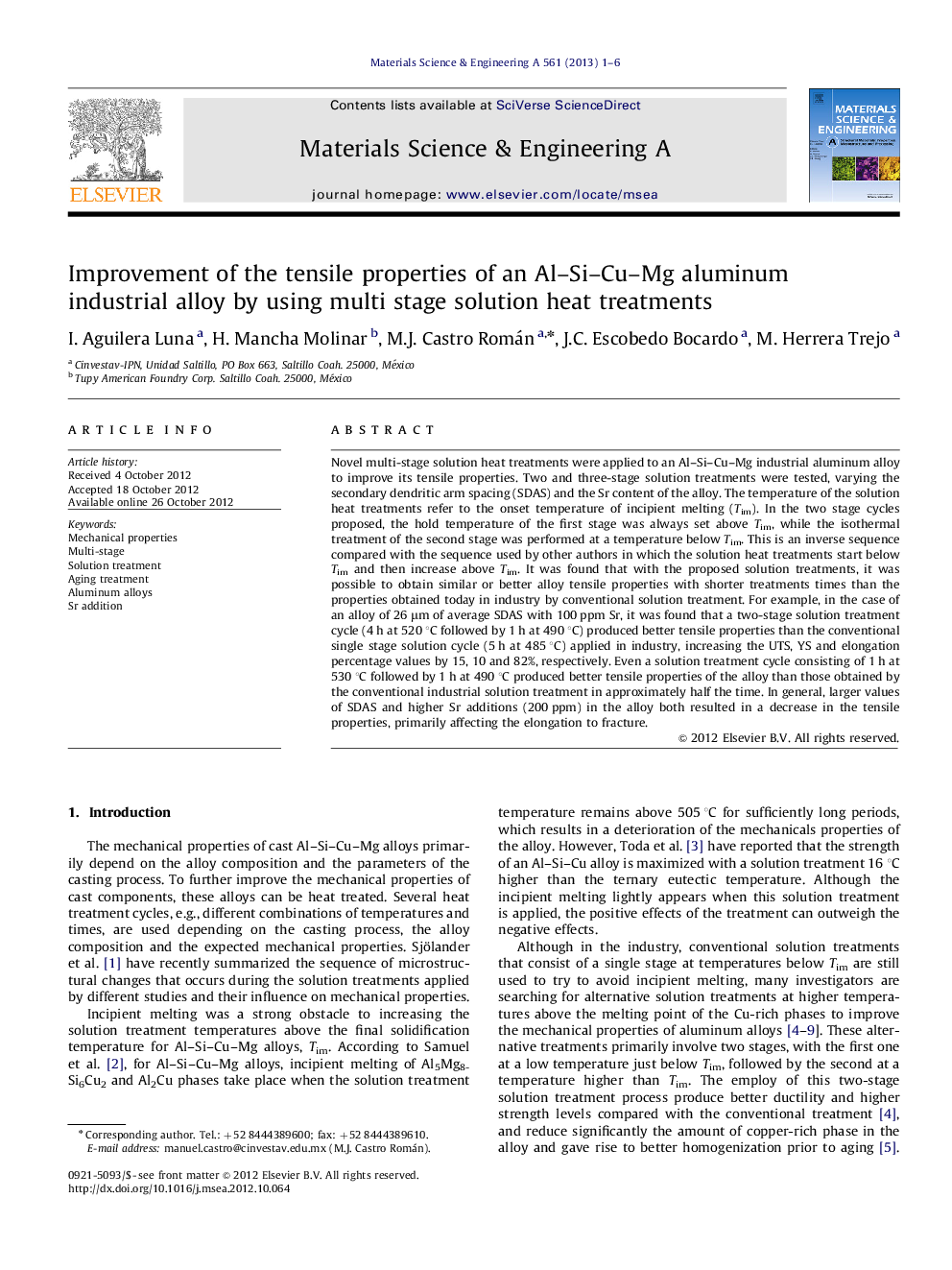| کد مقاله | کد نشریه | سال انتشار | مقاله انگلیسی | نسخه تمام متن |
|---|---|---|---|---|
| 1576452 | 1514782 | 2013 | 6 صفحه PDF | دانلود رایگان |

Novel multi-stage solution heat treatments were applied to an Al–Si–Cu–Mg industrial aluminum alloy to improve its tensile properties. Two and three-stage solution treatments were tested, varying the secondary dendritic arm spacing (SDAS) and the Sr content of the alloy. The temperature of the solution heat treatments refer to the onset temperature of incipient melting (Tim). In the two stage cycles proposed, the hold temperature of the first stage was always set above Tim, while the isothermal treatment of the second stage was performed at a temperature below Tim. This is an inverse sequence compared with the sequence used by other authors in which the solution heat treatments start below Tim and then increase above Tim. It was found that with the proposed solution treatments, it was possible to obtain similar or better alloy tensile properties with shorter treatments times than the properties obtained today in industry by conventional solution treatment. For example, in the case of an alloy of 26 μm of average SDAS with 100 ppm Sr, it was found that a two-stage solution treatment cycle (4 h at 520 °C followed by 1 h at 490 °C) produced better tensile properties than the conventional single stage solution cycle (5 h at 485 °C) applied in industry, increasing the UTS, YS and elongation percentage values by 15, 10 and 82%, respectively. Even a solution treatment cycle consisting of 1 h at 530 °C followed by 1 h at 490 °C produced better tensile properties of the alloy than those obtained by the conventional industrial solution treatment in approximately half the time. In general, larger values of SDAS and higher Sr additions (200 ppm) in the alloy both resulted in a decrease in the tensile properties, primarily affecting the elongation to fracture.
Journal: Materials Science and Engineering: A - Volume 561, 20 January 2013, Pages 1–6